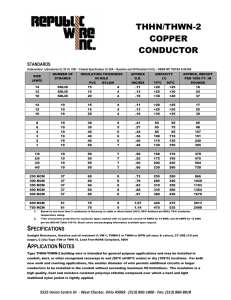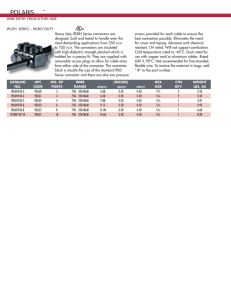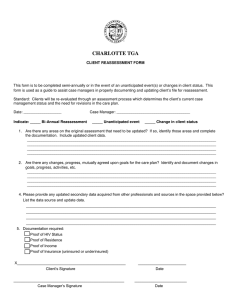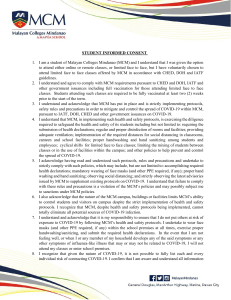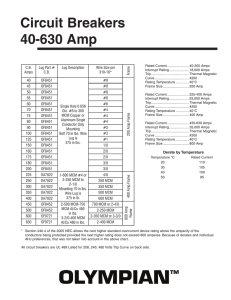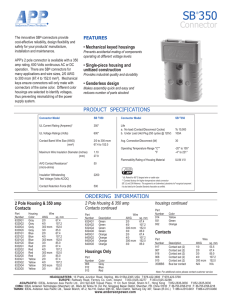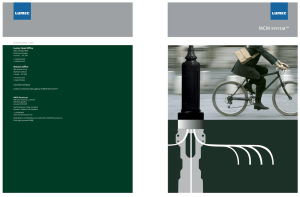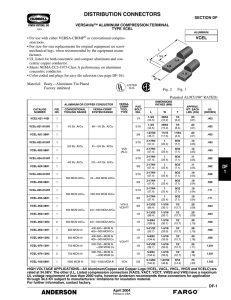Click for Powerpoint Presentation
advertisement
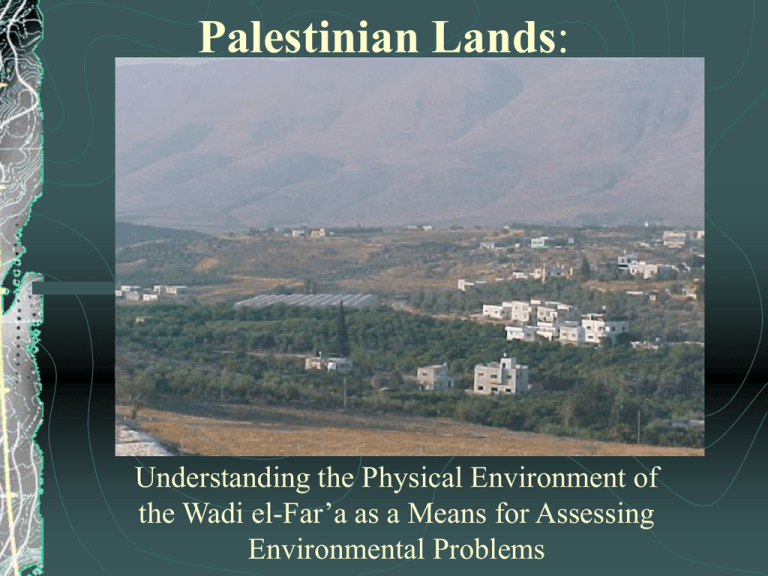
Palestinian Lands: Understanding the Physical Environment of the Wadi el-Far’a as a Means for Assessing Environmental Problems Project Sectors Project Sectors Pollution Water Rights & Resources Land Use & Built-up areas Historical Sites Physical Environment Physical Environment Sector Project Sectors Physical Environment: GEOGRAPHY, TOPOGRAPHY, GEOLOGY, HYDROLOGY, HYDROGEOLOGY G e o g r a p h y G e o l o g y Structural Map of theofWadi el-Far’a Tectonic Map the West Bank Source: Ghanem, 1999. Source: Ghanem, 1999. H y d r o l o g y Water Balance Total Precipitation = 138.8 MCM/yr Total Evaporation - 71.3 MCM/yr Total water for infiltration and runoff = Total runoff 67.5 MCM/yr - 7.5 MCM/yr Total well pumping - 18 MCM/yr Total Spring discharge Water Balance = 14.1 MCM/yr +27.9 MCM/yr H y d r o g e o l o g y Transmissivity map (m2/day) of Contour Mapaquifer: of the Groundwaterthe upper 500 meter phreatic zone (meter, relative to seacontour interval level) Source: Ghanem, 1999. Source: Ghanem, 1999. Assessment of Environmental Problems Water Balance equation reveal water surplus, but wells and springs running dry, indicating poor management and monitoring. Water Quality is worse than poor, it is TOXIC. BUT, based on Physical Environment, solutions to these problems exist. Remediation Proposals (NOT EXHAUSTIVE) i. Environmental Remediations a. Water and Soil monitoring and sampling; b. Extract toxic groundwater; c. Air pumping wells ii. Engineering Efforts a. Recharge areas; b. Dams; c. Reservoirs; d. Wastewater treatment factility iii. Palestinian Management and Control a. Laws promoting beneficial and sustainable use; b. Create agency to act as watchdog; c. Develop water projects iv. Introduce Efficient Irrigation Techniques a. Drip vs. open canal irrigation; b. Friendly fertilizers v. Teaching and bringing awareness vi. Drill new wells in high quality deep aquifer Some Realities I. Israel is unwilling to pass authority of water in the West Bank to the Palestinians, as they control over 80% of all water resources II. Palestinians are unlikely to have an adequately established government with enough financial capital to act implement environmental recommendations III. Israel has not allowed any water projects that increase Palestinian water supply since 1967, and will doubtfully will begin allowing such projects Conclusions The solution to the many problems discussed above may lie in the use of foreign agencies like USAID to help understand, assess, recommend and implement such projects that bring about the sustainable use and allocation of water throughout the West Bank. For more Information Visit our Website at: http://www.calvin.edu/~dvrb Contact Information: Dr. Bert de Vries: dvrb@calvin.edu Abi Tan: ltan84@calvin.edu Sebastian Naslund: snaslu22@calvin.edu

